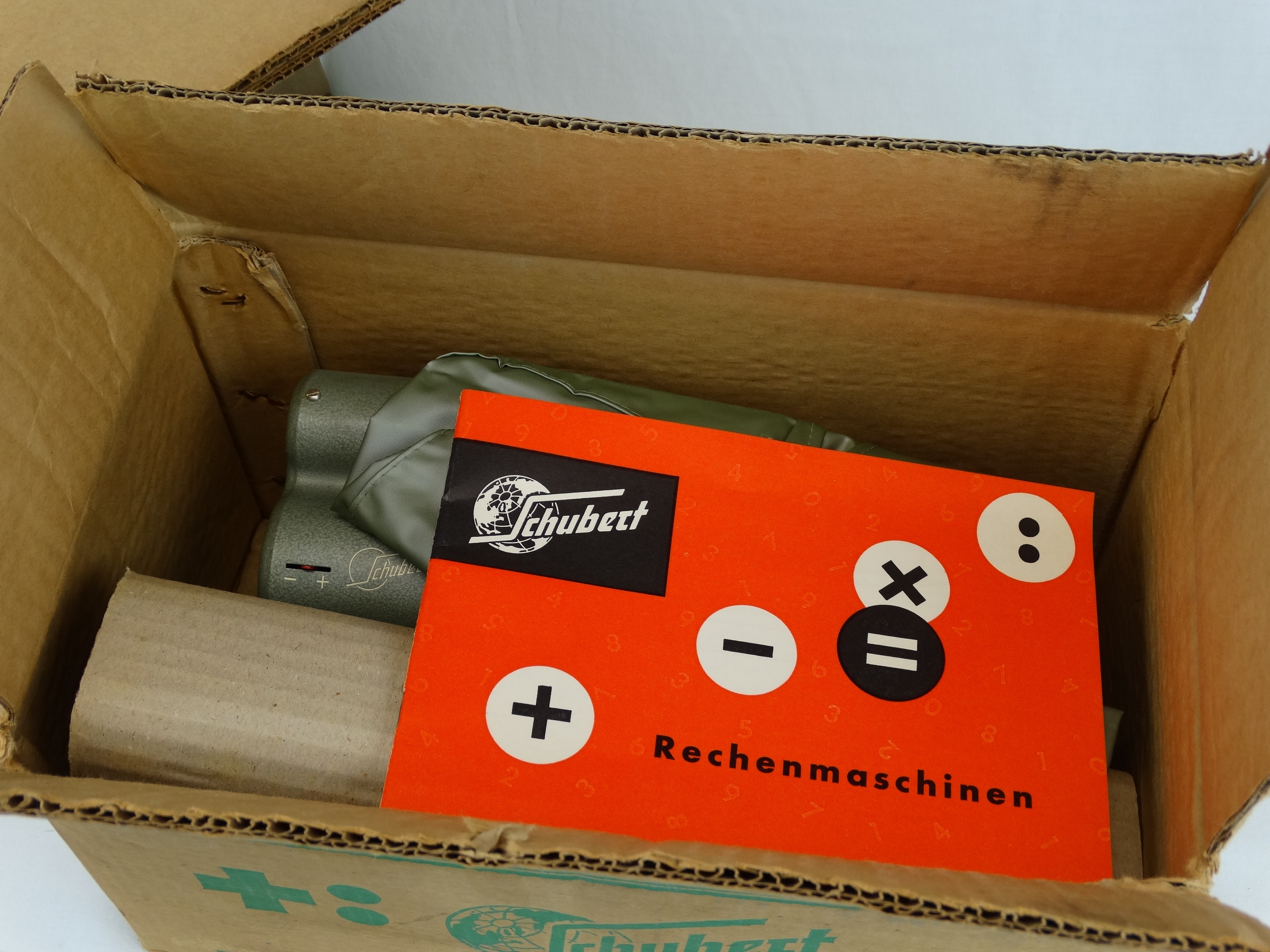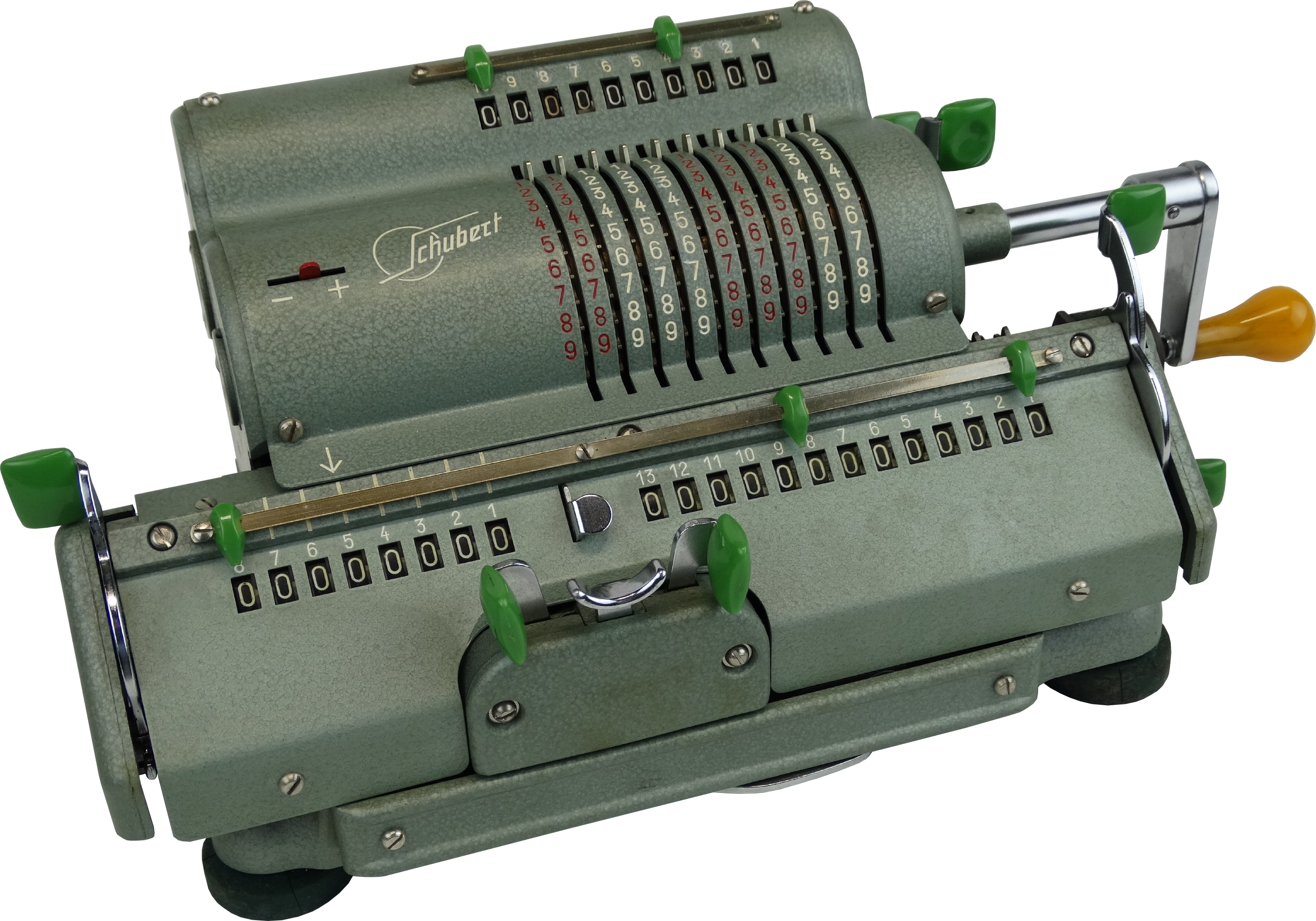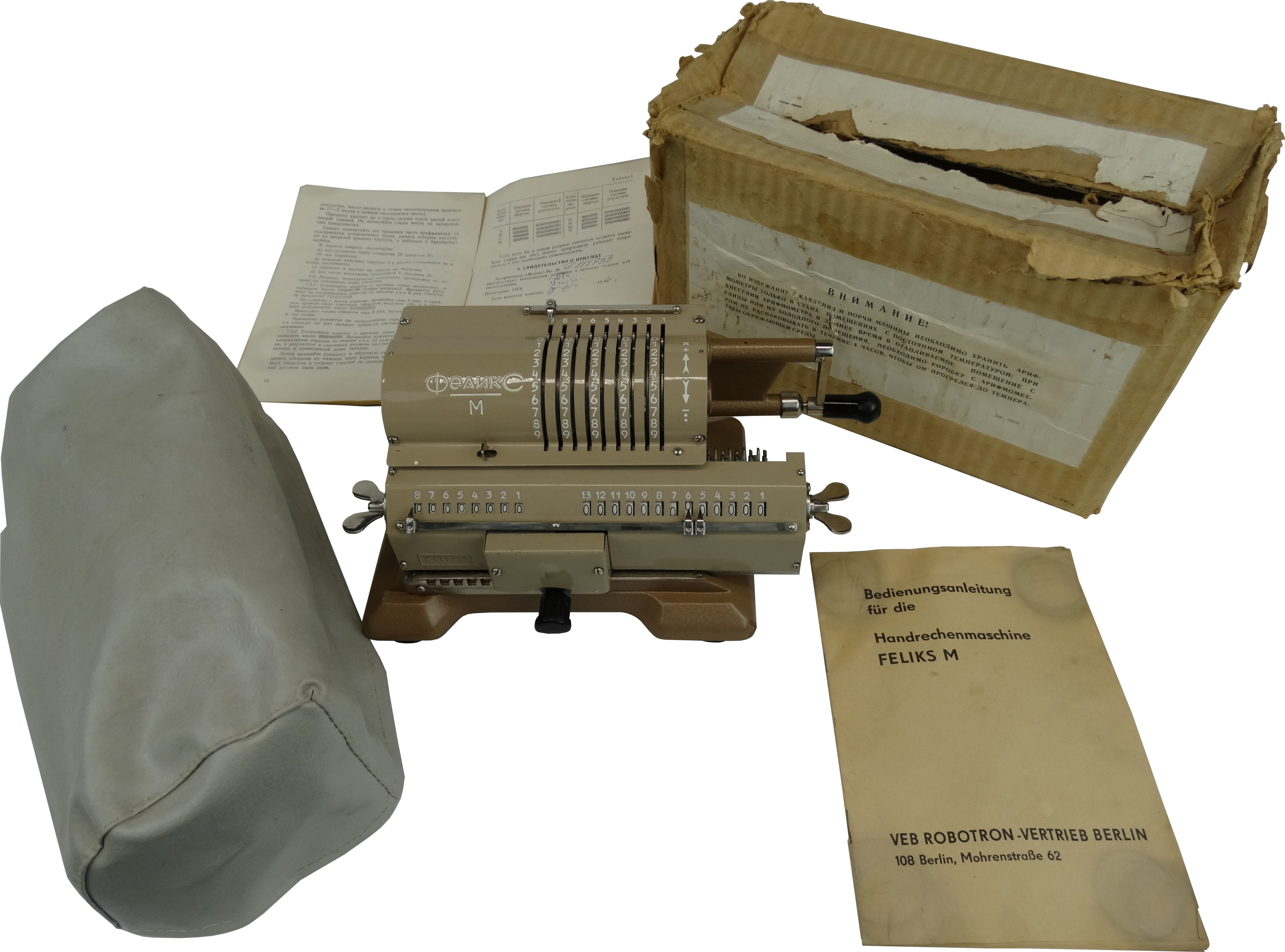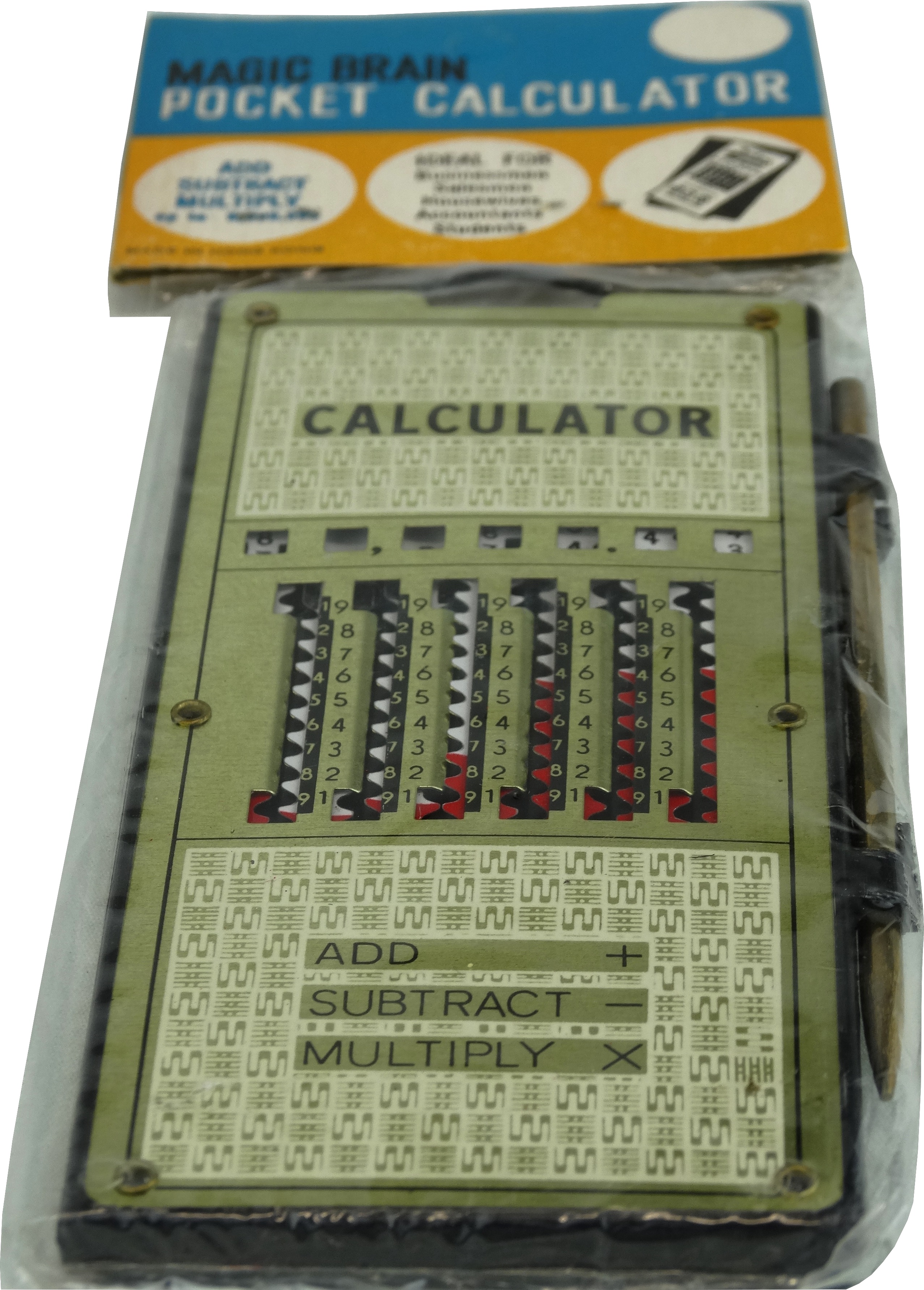The development of mechanical calculators came to an abrupt end in the mid-1960s, with the exception of a few stragglers that survived into the 1970s. Some stocks remained unsold and were kept for years in their original boxes, other machines were bought by companies but never even unpacked. This type of machine is a real time travel device to the mid-60s and early-70s.
Schubert, Rastatt, Germany, 1963
The Schubert E was developed in 1963 as a hand-operated ten-key machine with a modern and ergonomic design. By 1966, 500 had been built, most of which were never sold. In the 21st century, a lot of 20 unsold machines became available and easily found buyers in the collector community.

Collection: C. Vande Velde
s/n 172141, Schubert, Rastatt, Germany, ca. 1969
The Schubert DRV is one of the best mechanical calculators ever designed, and is an improved redesign of the Thales machine, after Emil Schubert had left there as business manager and set up his own company. It is a kind of Thales 2.0, and the DRV was built from 1952 until production and sales ceased in 1973. The machine is very light, has one-handed operation and a back-transfer device to return the result to the setting register. The only criticism is that after a few years of use, the plastic number wheels in the setting control register tend to stick on their axle due to old oil turning to glue. This is easily remedied with a little solvent. This machine appears never to have been unpacked after purchase and works perfectly.


Collection: C. Vande Velde
TRS, Zagreb, Yugoslavia, 1969
One of the last mechanical calculators to be developed was the Calcorex by Yugoslavian company TRS. Released in 1969 (!), this flamboyant design by Davor Grünwald is a style icon of the 1970s, the twilight years of mechanical calculators.

Collection: C. Vande Velde
Schetmash factory, Kursk, USSR, 1978
Felix machines, named after Felix Dzerhzinski, originated in the Soviet Union when the production machinery of the Odhner factory in St Petersburg was moved to Moscow after the Russian Revolution. Later production was moved to the Schetmash factory in Kursk.
Mechanical calculators were built until 1978 and delivered until 1981 (this example!). Apparently it was put in a cupboard and never unpacked. The warning on the box states that it is very important to allow the machine to warm up to room temperature before opening the box - this is certainly the case when delivered in a Siberian winter. The quality of these late machines is questionable at best.

Collection: C. Vande Velde
KOVO, Prague, CSSR, ca. 1978
Also in Czechoslovakia there was a lively export market for calculators to friendly Eastern Bloc countries. This NISA K5, still in its original polystyrene packaging, comes from the GDR in its original box with the plastic cover to protect it from dust, the handle for manual operation and the booklet with service addresses. The latter was printed in ... 1984!

Collection: C. Vande Velde
Luc Hoorelbeke, Bouwel, 1972
This electronic calculator is based on the first "calculator-on-a-chip", made by MOSTEK, the MK5010P. The engineer who bought this chip (in the USA, through connections in the company where he worked) had to scrounge, develop and assemble all the rest of the machine himself, but this was a sacrifice he was happy to make. The keyboard is moulded in silicone, and the case is also homemade in fibreglass-reinforced polyester. All the circuit boards are uniquely developed, and the components are soldered by hand. The date code on the chip indicates a production date of November 1972. The machine still works on a new, full battery. These relatively cheap one-chip integrated circuit machines were the final coup de grace for mechanical calculators, 350 years after their first appearance, and heralded the real start of the computer age.

Collection: L. Hoorelbeke
These price lists and advertisements illustrate the rapid rise of the electronic calculator, which was fast, quiet and maintenance-free in contrast to the noisy mechanical machines. Toshiba's price lists were updated weekly at Modern Office, and the handwritten note shows that changes were made even in the middle of the week. ("New Toshiba prices - Wednesday evening")

Collection: P. Vlerick
Two generations of electronic calculators: HP-41CX (1983-1990)/TI 66 (1983-1988) (programmable) and HP 48GX (1993-2003)/TI 92 (1996-1997) (programmable, graphical, with CAS).

Collectie: P. Levrie
Hong Kong, 1960-1970
This slide adder has a very simple construction with a metal front (usually gold or silver) and a plastic back (black or red). Both parts are held together by 6 hollow rivets. The adder can be used to add, subtract and multiply up to 9,999,999. These machines are often sold in their original packaging on specialist websites or at trade fairs.

Collection: E. Smet (item 181)